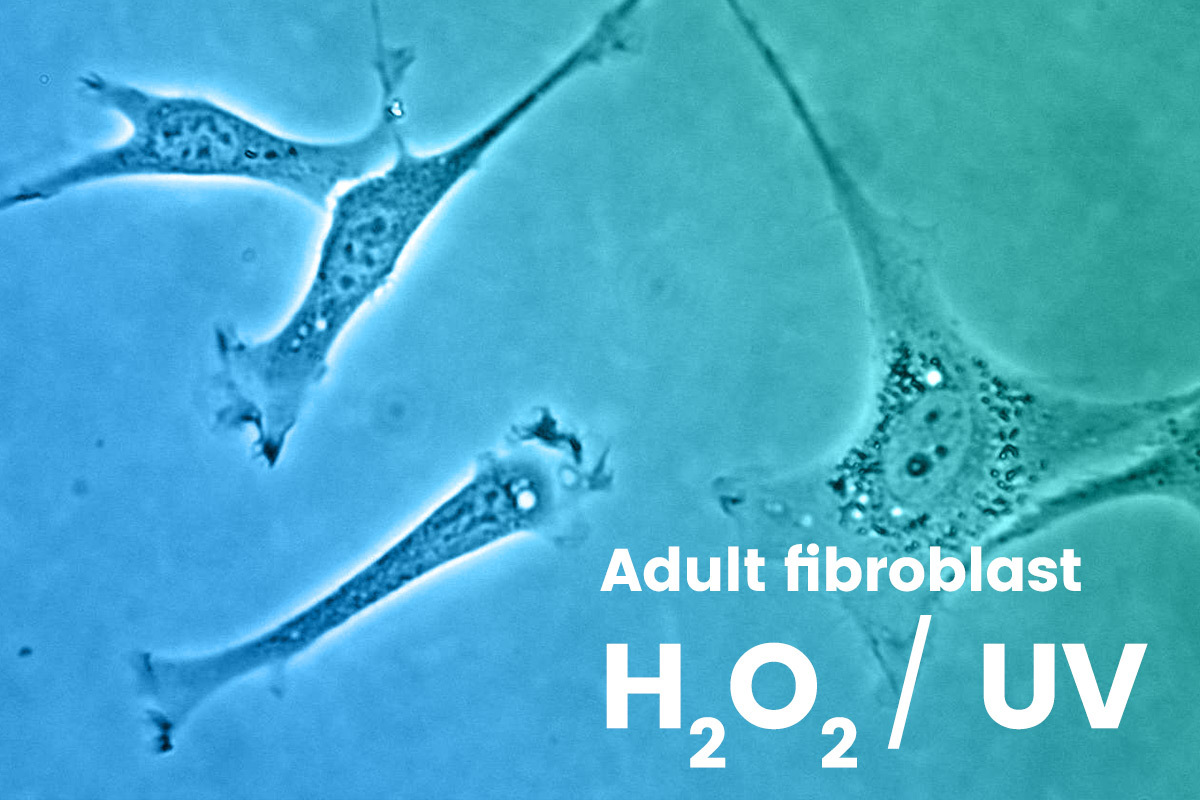Hussein and Retamal, December 2005
Introduction
It is becoming increasingly apparent that AAGP® has strong cell preservation qualities. With this in mind a series of experiments mimicking cell stress conditions (pH, oxidative stress, low temperatures and time) were conducted to challenge both human adult and neonatal fibroblasts exposed to AAGP® in comparison to human adult and neonatal fibroblasts not exposed to AAGP®. This was done with the use of AAGP® as a anti-aging agent, protecting skin from the harsh environment, in mind. The particular experimental protocol aimed to establish the protective effects of AAGP® during models of oxidative stress (hydrogen peroxide and UVC exposure).
Method
Neonatal and adult fibroblasts were plated at a concentration of 1×105 cells/ml and grown on non-adherent plates in serum-free media at 37°C with concentrations of 0 or 15mg/ml AAGP®. To test the affects of AAGP® on oxidative stress the cells were either exposed to 1mM hydrogen peroxide or UVC (256nm) rays for 2 hours. Cell counts were taken at various time points using Trypan blue and two counts were performed per sample to calculate the percentage viability (from 0 hours) of the cell sample.
Results
Hydrogen Peroxide – 10 hours post exposure only 2% of the human neonatal control fibroblasts were alive. In comparison the human neonatal fibroblasts exposed to 15mg/ml of AAGP® still showed 78% cell viability.
Similar findings were seen in the human adult fibroblast populations where after 24 hours all control cells were dead. However 80% of the cells exposed to AAGP® were viable.
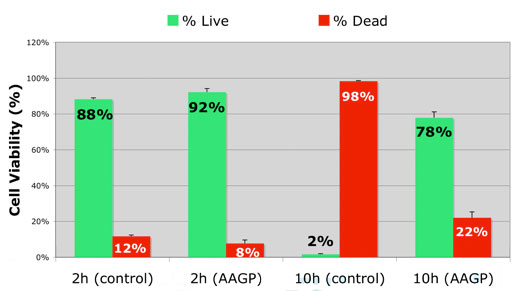
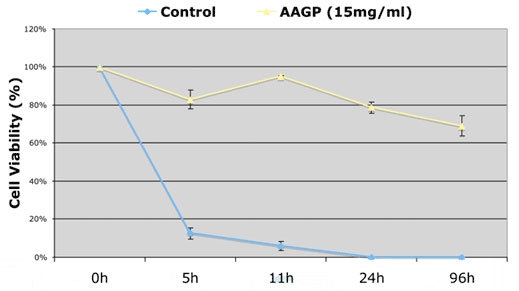
UVC – 67 hours post exposure all control human adult fibroblasts were dead. Comparatives 60% of the human adult fibroblasts exposed to 15mg/ml AAGP® along with the UVC light were still viable.
Though not as prominent the AAGP® also appeared to protect the human neonatal fibroblasts against UVC induced oxidative stress; at 91 hours post exposure 0% of the control cells were viable compared to 30% of the cells in the AAGP® exposed group.
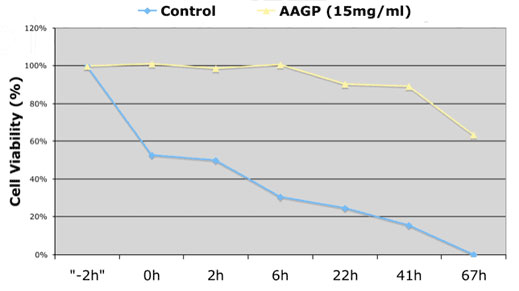
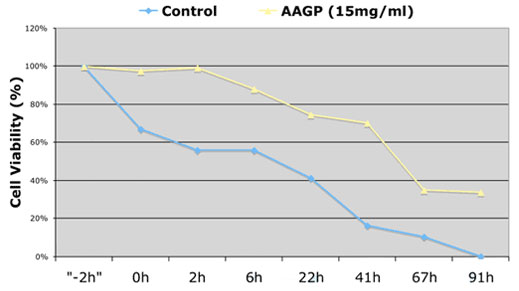
Conclusion
We demonstrated that AAGP® protects skin fibroblast cells from H2O2 induced oxidative stress and UVC-induced damages both of which lead to the production of highly reactive free radicals. The fact that AAGP® is able to preserve the majority of cells after a prolonged exposure to hydrogen peroxide and UVC thus suggests a possible implication for AAGP® in eliminating free radicals and preventing them from reacting with cellular membrane lipids, proteins, and DNA where they could cause major damage. The fact that it can protect the majority of cells after a prolonged exposure to such stressful conditions suggests it prevents peroxides from entering the cells and causing cellular damage either by possibly sequestering peroxides or hydroxyl radicals at the surface or around the cells or by acting as an anti-oxidant and preventing accumulation of free radical. As to the exact mechanism, it is still to be determined.
